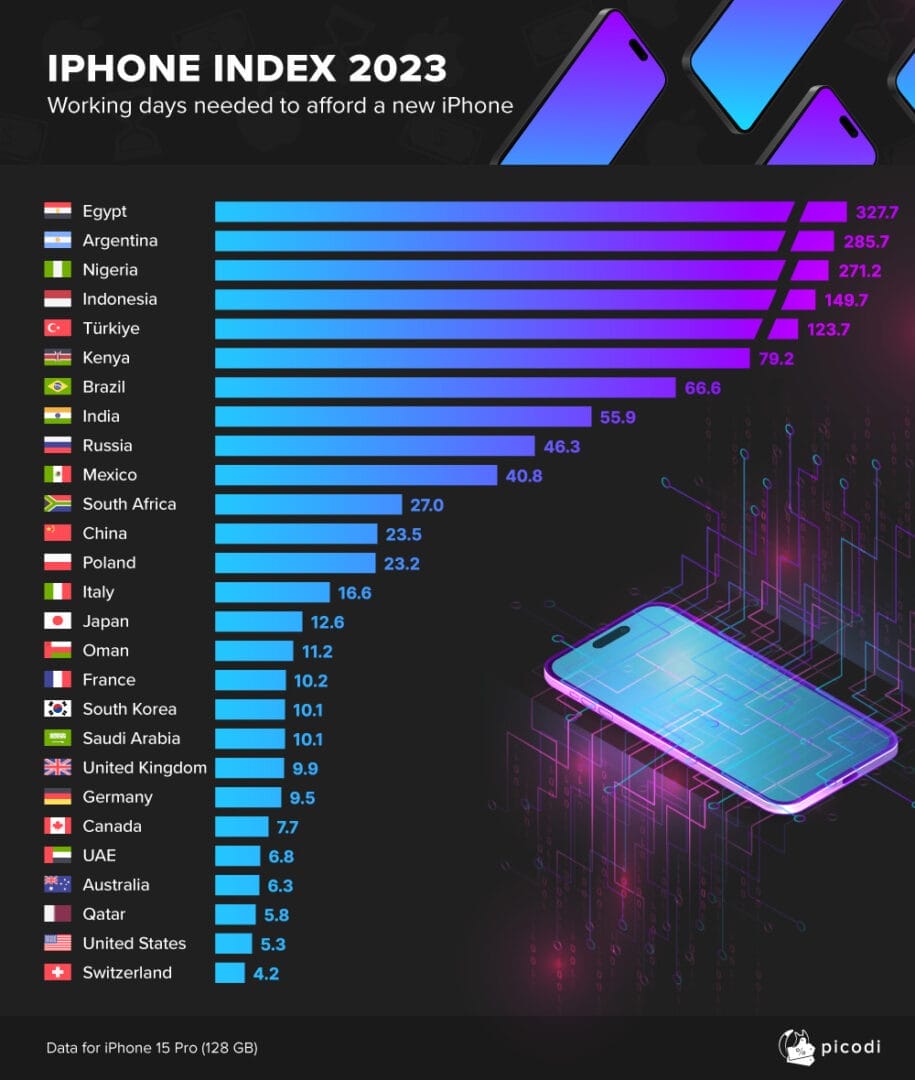A recent study conducted by Picodi Nigeria analysts has revealed that an average Nigerian will need to work for <270 days to be able to afford an iPhone 15 Pro (128GB edition).

The sixth edition of Picodi.com’s “iPhone Index” annual report showed a significant increase in the cost of the iPhone 15 Pro (128GB) in Nigeria, reaching ₦1,400,000, which represents a ₦361,000 increase compared to the previous year. This surge is despite the global base price of $999.
The discrepancy in price stems from the exclusion of sales tax in Nigeria, which significantly affects the actual cost. In contrast, the showcased price for the iPhone 15 Pro (128GB) in the United States ($999) does not include the sales tax, rendering the iPhone accessible at the base price only in specific US states. Meanwhile, in Nigeria, the 7.5% goods and services tax further compounds the price tag. With an average monthly salary of ₦108,405.65, an average Nigerian would require 271.2 man-days to save enough to buy the iPhone 15 Pro.
Remarkably, while the iPhone 15, launched in 2023 (from $999) is $100 “cheaper” than the 14 launched in 2022 (from $999/$1,099), it will take less working hours to buy the 15 than it did to buy the 14.
This is what the iPhone Index looked like in Nigeria in the last 6 years:
2018: 91.2 days
2019: 122.9 days
2020: 188.2 days
2021: 211.0 days
2022: 302.9 days
2023: 271.2 days
Switzerland, US & the UK
Switzerland emerged as the leader in the iPhone Index, where an average Swiss citizen requires only 4.2 man-days to afford the latest iPhone. In second place is the USA, where, in 5.2 days, the iPhone 15 can be bought.
Coming in 8th place is the UK which requires 9.9days of work to be able to afford the iPhone 15, priced at £999.
Egypt’s Challenges
In contrast, Egypt faced the most challenging situation, requiring 327.7 days of work to purchase the same smartphone. Nigeria, landing as the third most challenging among the countries surveyed, recorded 271.2 man-days.
According to Picodi.com, the iPhone Index methodology involved an annual assessment of the iPhone price-to-wage ratios since 2018. Average wages were sourced from official statistics offices’ websites and were up-to-date at the iPhone release in the respective countries. Net wages were gotten from salary calculators, with monthly wages divided by the average number of working days in a month.






